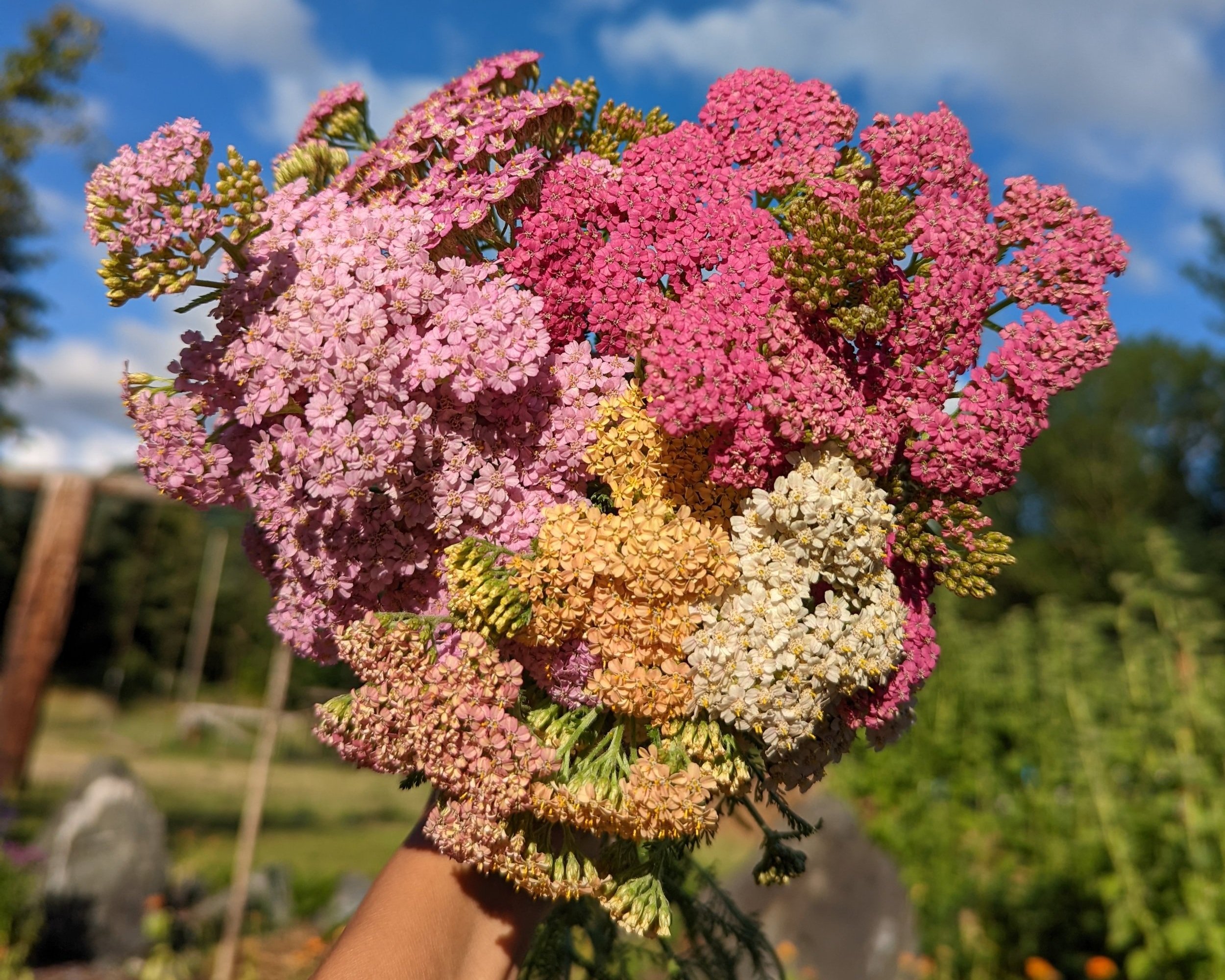Flowers for the soul.
Meet the farmers
Hi! We’re Gabe and Zanna — sisters and owners of Sol Sisters Flower Farm, based in Everson, WA. While we are new to farming, we have been gardening and growing ever since we were kids. Our mother comes from a family of subsistence farmers in the Philippines and when she moved to America, she brought with her an abundance of knowledge and experience.
She taught us from a very young age to appreciate growing your own food and flowers. We watched in wonder as tall stems of tulips would spring up from the barely defrosted earth after a long, cold winter in Maine — or as bright orange lily blooms would seemingly appear out of nowhere (forgetting that we planted the bulbs 6 months earlier). And of course the ruby red orbs of tomatoey goodness that we would pluck straight from the garden for a quick snack. Oh! We can’t forget about the rhubarb, which we learned was not only deer resistant but absurdly delicious when paired with strawberry in a pie.
As we continue along this journey, we hope to spread beauty, joy, and wonder to our community.
We are committed to using regenerative farming practices that rebuild our soil and help our local ecosystems thrive.
What is Regenerative Farming?
In its simplest form, regenerative farming is a style of farming that focuses almost entirely on improving soil health. Why? Because rich, healthy soil is the key to a rich, healthy ecosystem.
Industrial and conventional farming practices degrade the soil because the focus is on increasing crop production and expediting the growth cycle of crops. This leads to depleted nutrients from the soil and an over-reliance on chemical fertilizers and pesticides which have a massive ripple effect that can lead to soil erosion, toxic runoff, harmful algal blooms, and loss in biodiversity (among many other things).
Regenerative farming techniques take the broader ecosystem into consideration by working with (not against) nature. One example of this is incorporating livestock onto a farm and diversifying crops — this not only disrupts weed cycles and curb pests, but also increases water retention of the soil, feeds the soil’s microbiome, and encourages visits from beneficial insects like pollinators.
While the term “regenerative farming” is relatively new, the practice is not. Indigenous communities have been farming this way for centuries. The “Three Sisters” companion planting tradition is a beautiful example of how Native Americans harnessed the power of nature to cultivate a bounty of corn (maize), squash, and beans. They learned that the corn provided a trellis for the beans to climb, the squash leaves covered and protected the soil, while the beans fixed nitrogen into the soil (a necessary nutrient for these crops). Read more here.
If we haven’t completely lost you yet, there are 5 key principles of regenerative farming: minimize soil disturbance, maximize crop diversity, keep the soil covered, maintain a living root system year-round, and integrate livestock. Below we talk a little more about how we incorporate these principles onto our farm.
What does regenerative farming look like on our farm?
We minimize soil disturbance by not tilling the soil before planting. We use the “lasagna” method by covering the area with layers of cardboard, compost, and soil. Anything underneath will die without sunlight and those nutrients will feed back into the soil (and the cardboard will decompose over time with the help of worms and microorganisms).
We maximize crop diversity by swapping out beds each season as well as planting natural pest deterrents among our flowers (like marigold and alliums). Eventually we would love to provide homes for honeybees with a dedicated pollinator garden.
Instead of cutting down all of our flowers at the end of the season, we let everything die back naturally to maintain living root systems year-round. This also provides food for the birds in the winter as well as cozy hideaways for critters.
Cover crops are used in some beds at the end of the season. This makes sure the soil is healthy when we have to plant the following spring.





